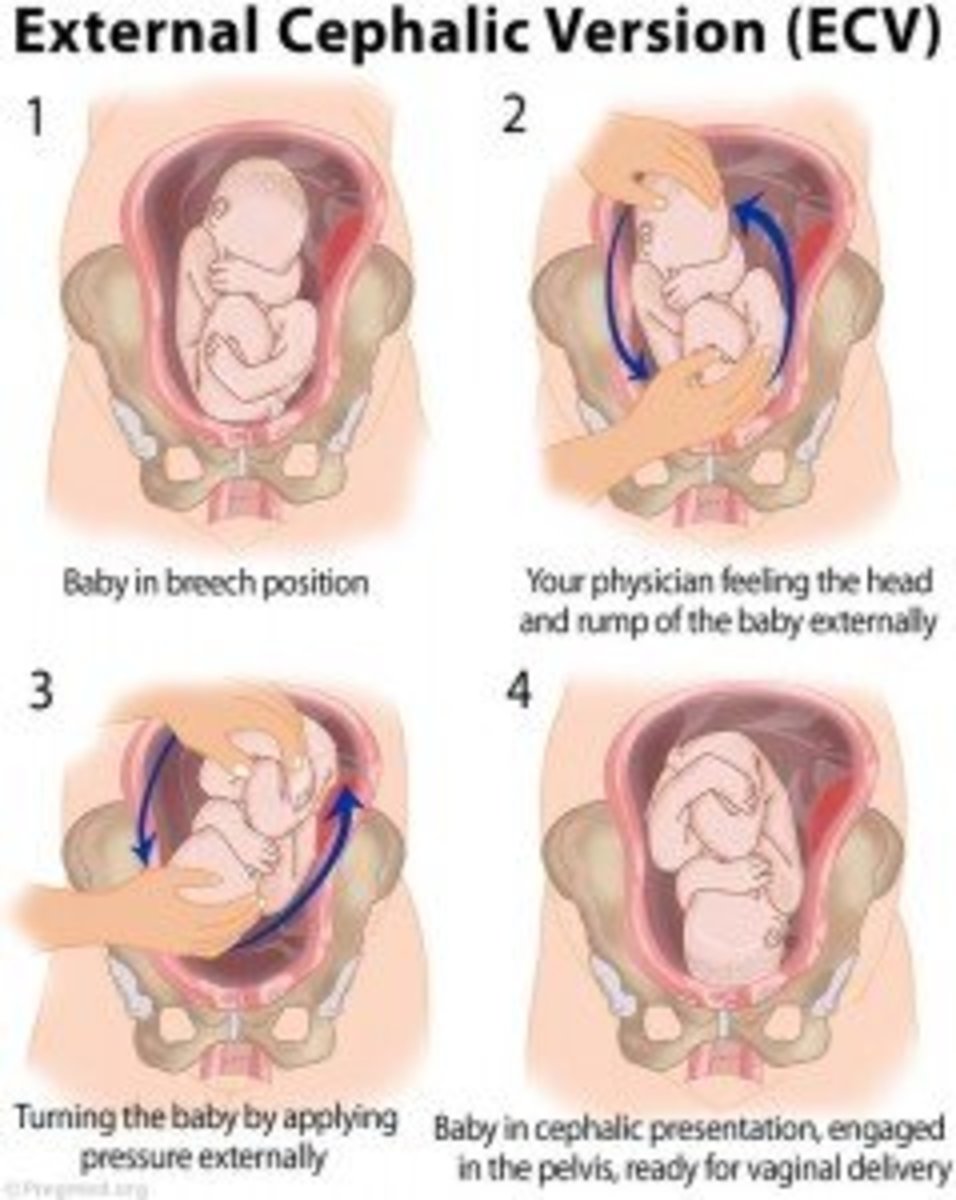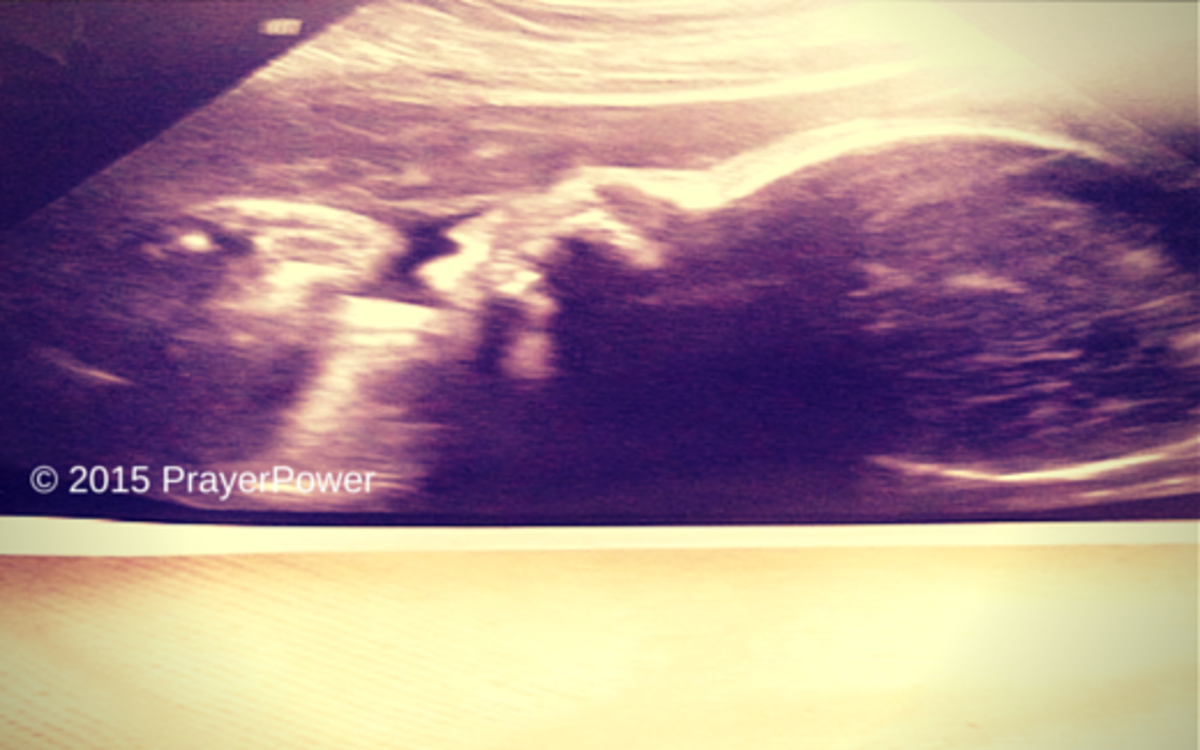- HubPages»
- Health»
- Women's Health»
- Pregnancy
Pros and Cons of a Water Birth

What is a Waterbirth?
My wife and I have booked a water birth for the birth of our first child in a few weeks. We spoke to half a dozen couples who decided for and against; had a 40 minute consultation with our midwife; read dozens of articles online; and bought two books on the topic. So...What IS water birth?
Water birth is delivery of the baby while the mother is in a large tub of water. The baby is actually delivered whilst under the water, which is believed to be less traumatic for the baby than birth to air. Whilst thought of as more 'natural' than other means of child birth, babies have never been traditionally born into a pool of water, and no cultures actually practise water birth.
Whilst there is isolated evidence of water birth being used in the late 18th Century, the idea of water birth was first explored in depth in the 1970s by Igor Tcharkovsky. He discovered that newborns have a dive reflex: babies only attempt to breathe when they come into contact with the air.
Practical Parenting Magazine are also impressed by the benefits of water birth:
"Women are often attracted to water during labour in the same way that they take a bath if they have menstrual pain or backache or feel stressed."
Important note: Water birth, the same as any birthing option, has its risks. There have been a few isolated baby deaths related to water birth. Some practitioners recommend labouring in water and getting out for actual delivery.
Water Birth Video
Can I Have a Water Birth?
Water births come with some risks, the same as any other method of child birth. However, some women absolutely should not have a water birth:
- Women giving birth prematurely: the 'dive-reflex' is not perfected until 37 weeks. Any earlier than this and the baby may drown before you get them to the surface.
- Women whose babies have passed meconium (baby's first stool): these babies need their nose and mouth suctioned as soon as the head is delivered to stop them breathing in faeces.
- Women with genital herpes
- Women with high blood pressure
- Women carrying twins: Twins are at a higher risk of complications.
It is also preferred that the baby is head down. Once you start pushing, your midwife should ensure that your waist remains below the water. Whilst babies are born with a dive reflex, this is brief - once the baby is out of the water it should not go back in.
Have you considered a water birth?
Benefits of a Water Birth
Just because it hasn't been traditional or 'mainstream' doesnt mean there aren't distinct advantages to a water birth.
- Water encourages relaxation and a sense of calm. It also supports your body much better than lying on a bed. This will all help you cope better with pain.
- Water helps the vagina to stretch and soften and so can prevent or lessen the severity of tears.
- Bathing in water releases the hormone oxytocin, which brings about more powerful contractions. This can speed up labour.
- There is a greater sense of privacy in a pool - you don't feel as if you are on show when chest deep in water.
- Many women feel less intimidated by their environment when labouring in water. A room with a large pool in is often less clinical and less threatening.
Risks of a Water Birth
Provided you are a low risk pregnancy, there are relatively few risks with water births. Water births traditionally have fewer complications and labours progress more smoothly. This is thought to be due to women feeling more relaxed and less nervous when labouring in water. There are a few reported baby deaths related to water birth. If you are nervous about this, you may wish to labour in water, but get out for the actual delivery.
Pain Relief in Labour
Water Births and Pain Relief
Labour is a painful experience. Whilst one of the benefits of a water birth is that it helps in relaxation and as a mild pain relief, some women will want stronger pain relief as labour progresses. There are restrictions to the pain relief you can receive if labouring or delivering in water. You cannot use the following pain relief methods when having a water birth:
- TENS Machine: TENS stands for Transcutaneous Electrical Nerve Stimulation, and works by blocking pain signals from the lower part of the body moving up the spinal cord. It also stimulates the production of endorphins - our natural pain-relieving hormones. You may have noticed the word 'electrical' - electricity and water do not mix. A TENS machine cannot be used in water.
- Pethidine (narcotic pain relief): This strong painkiller can make the mother (and baby) sleepy and disorientated. Falling asleep in a large, high-sided pool of water is not recommended. Due to the Pethidine cannot be used in water.
- Epidural: An epidural involves having a canular inserted into the epidural space in the spine. This numbs all feeling from the abdomen downwards. Although slightly weaker epidurals (ambulatory epidurals) are available, these still numb sensations too much. The mother may lose all sensation to push and may not know when the baby has been delivered. Epidurals cannot be used in water.
Despite these restrictions, you can still have other forms of pain relief. Always remember that the more relaxed you are during a contraction, the less it will hurt. The water will help you stay relaxed and will support your body making you more comfortable. If you still feel you need more pain relief, you have one more option:
- Gas and Air (Entonox): A self administered, fast acting (also wears off quickly) method of pain relief. This can be used during a water birth.
Birthing Tub Rental
- Birth Pools2
A site based in the Us for all your water birth needs. Caters for a wide range of needs and budgets. - Sacred Spiral Doula
This was the service we used. Whilst it is a local company, we found it by googling "rugby birthing pool hire." A similar search for your own local area should be just as successful. - Birth Pool in a Box Inflatable Birthing Pools
Birth Pool in a Box. This is a warehouse-type website with everything you would need for a UK water birth.
Water Birth Supplies
Many labour wards now come equipped with specialist birthing pools. However, their use cannot be guaranteed - it doesn't matter if it was on your birth plan, or if you are paying extra, or if you own the maternity wing! If there is a woman already labouring in the pool when you arrive, you cannot drag her out.
This leaves you with several options.
- In the UK, the vast majority of labour suites have private bathrooms. A warm bath will help in the early stages of labour and, if your are progressing nicely, it may be possible to deliver in the tub (discuss this with your birth team.)
- You can hire or even buy birthing pools online. Some hospitals will allow you to bring in your own birthing pool (check with your hospital if this is possible). If this is not permitted by your labour ward, you can always use your birthing pool at home.
When renting a birthing pool check out the following:
- When will the pool arrive? Is shipping included? Do I have to collect?
- Will I need to assemble it?
- How is it filled/emptied?
- Does it come with a lining/filter?
- Is the pool solid sided or inflatable?
- Is the pool heated or will it require external temperature regulation?
You should ensure that the pool arrives in your 37th week of pregnancy. Put down plenty of PVC/plastic sheeting before it is placed!
It may sound obvious but, if you are going to opt for an at-home water birth, make sure it fits in your chosen room. They are usually around 5feet square.
Things You May Need During a Water Birth
As you have read, a water birth can help a mum-to-be to have a more relaxed, less intimidating, less painful and faster labour. However, being in a pool does restrict some of your movement. While you are welcome to move in and out of the pool as you wish, this can be tricky - particularly as labour progresses. It helps to have a few things close to hand, whether you are having a water birth at home or at the hospital.
Water Birth Checklist
Item
| Notes
|
|---|---|
Water to drink
| Some women prefer ice lollies or ice chips. Do you want it from a straw/bottle?
|
T shirt or crop top
| If you want to wear anything in the water.
|
Small plastic bucket/stool
| Most pools come with a seat and steps, but this can substitute.
|
Inflatable pillow
| To rest your head!
|
Folded towl or mat
| For kneeling on in the pool.
|
Sieve or fish net
| To remove mucus or bowel motions*
|
Plenty of large, clean and slightly warmed towels
| |
Thick bath robe
| You will be cold after leaving the water.
|
*Passing a stool or mucus during labour this is completely normal, very common and midwives are used to it. You will probably not even notice - you will be otherwise engaged!
Water Birth Quiz
view quiz statisticsWater Birth Advice
- Birth Pools2
The NCT is the largest charity for parents in the UK. This section of their website has extensive information about every imaginable facet of water birth. Highly recommended. My wife and I read this extensively before deciding on a water birth







